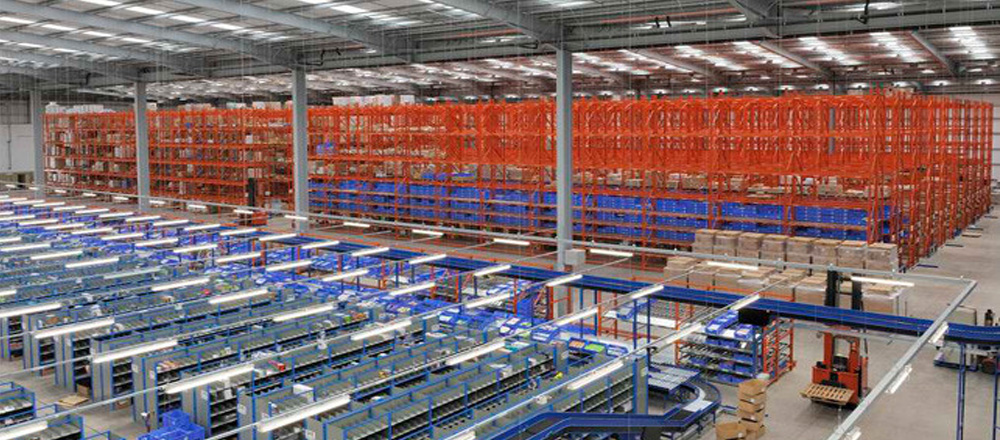The growth of e-commerce is driving profound changes in the way Autonomous Warehousing Solutions Online and distribution centres operate. Historically, conveyors and sortation systems were designed around fulfilling retail, brick-and-mortar stores with full cases on a conveyor or line sorter. Typically, these systems were used for ferrying one large case after another. With the advent of e-commerce, equipment is expected to handle each individual item. The most critical element right now is that conveyors and sorters must be able to adapt.
High end sortation, loop sorters and fixed conveyors are seen as a fixed solution to a moving target, and not as effective. “The technology now lends itself to more flexibility since it now incorporates the next evolution of communication. In the past, when you wanted to modify a sorter, you had to go put physical things on it to tell it to take a certain action at a certain point. Now, there’s constant communication throughout, and so you can systemically make changes to the sorter on the fly. This is a game-changer, and customers are coming to understand that’s a huge piece of the puzzle.”
There is a perception that conveying and sortation as old technology from the 1990s for case conveying, but it has a foundational place in the new, modern DC. There is a need for methods that are more automated, more space-saving and more productive as there is increasing need for accuracy and throughput. Also, the setup should be scalable and flexible in order to keep pace with the changing environment.
Motor-driven roller (MDR) technology allows individual conveyor segments to operate independently, further enhancing flexibility. Whereas conventional line shaft conveyors run all the time, MDR will only move when a load is present. By changing acceleration rates, stopping points and other factors, MDR also offers opportunities for creativity. Modern conveyor and sorter components are adaptive and flexible, but they are just pieces of the puzzle.
There are a lot of legacy systems installed which are struggling under changing demands, and customers are trying to figure out what makes more sense: completely replace or rebuild? Replacement is more expensive as it causes significant amount of downtime, but it brings a lot of benefits by increasing throughput and re-optimizing. There are some workarounds, like conveying in totes instead of installing a conveyor capable of handling both a sweater and a mini-fridge.
There are some advantages that can be achieved through advances in software that can help optimize the flow of goods throughout a facility. For example, a sorter destination capable of accumulating 15 cubic feet of goods bound for a retail store might be dynamically reconfigured to process ten 1.5-cubic-feet, e-commerce orders. In addition to advanced software, sortation hardware has also developed solutions to the e-commerce need for targeted sorting and sub-sorting.
There are four key trends impacting the design and usage of conveyor and sortation equipment.
Increasing use of goods-to-person workstations: Modular conveyor is the foundation of goods-to-person workstations. Modular conveyor is the structure that indexes the load into a precise position where it’s accessed by a worker. Modular conveyor can sequence cartons and totes into and out of the goods-to-person workstation and conveyor configuration accommodates worker ergonomics.
Robotic piece picking for order fulfilment: Modular conveyor is the foundation of robotic piece picking cells. The robot is the centrepiece of the cell, but the AI Robotics for Order Fulfillment requires a conveyor module that can sequence and position inventory containers and order containers. Modular conveyor indexes the load into a precise location where it is accessed by the robot.
Reconfigurable and scalable solution: The accelerating rate of change in operational requirements is driving the need to implement conveyor systems that can be reconfigured, and modular conveyor accommodates that need. For example, a steerable wheel sorter module can be relocated in the existing side frame.
Ecommerce fulfilment centres ship orders in bags: Conveyor systems with all-belt conveying surfaces accommodate poly bags for e-fulfilment operations. This trend has increased the application of segmented belt surface conveyor with accumulation zones.
Once a state-of-the-art system is up and running, the next challenge is to keep it that way. Maintenance practices have evolved around more connected systems with more sensors, more data and more predictive recommendations to minimize system downtime. It is possible to prevent wear and tear with something as simple as allowing the system to slow a sorter when volume is lighter. The same sensors that monitor the condition of equipment can alert a warehouse execution system (WES) to reallocate material flow from an overactive area to one that still has capacity.










